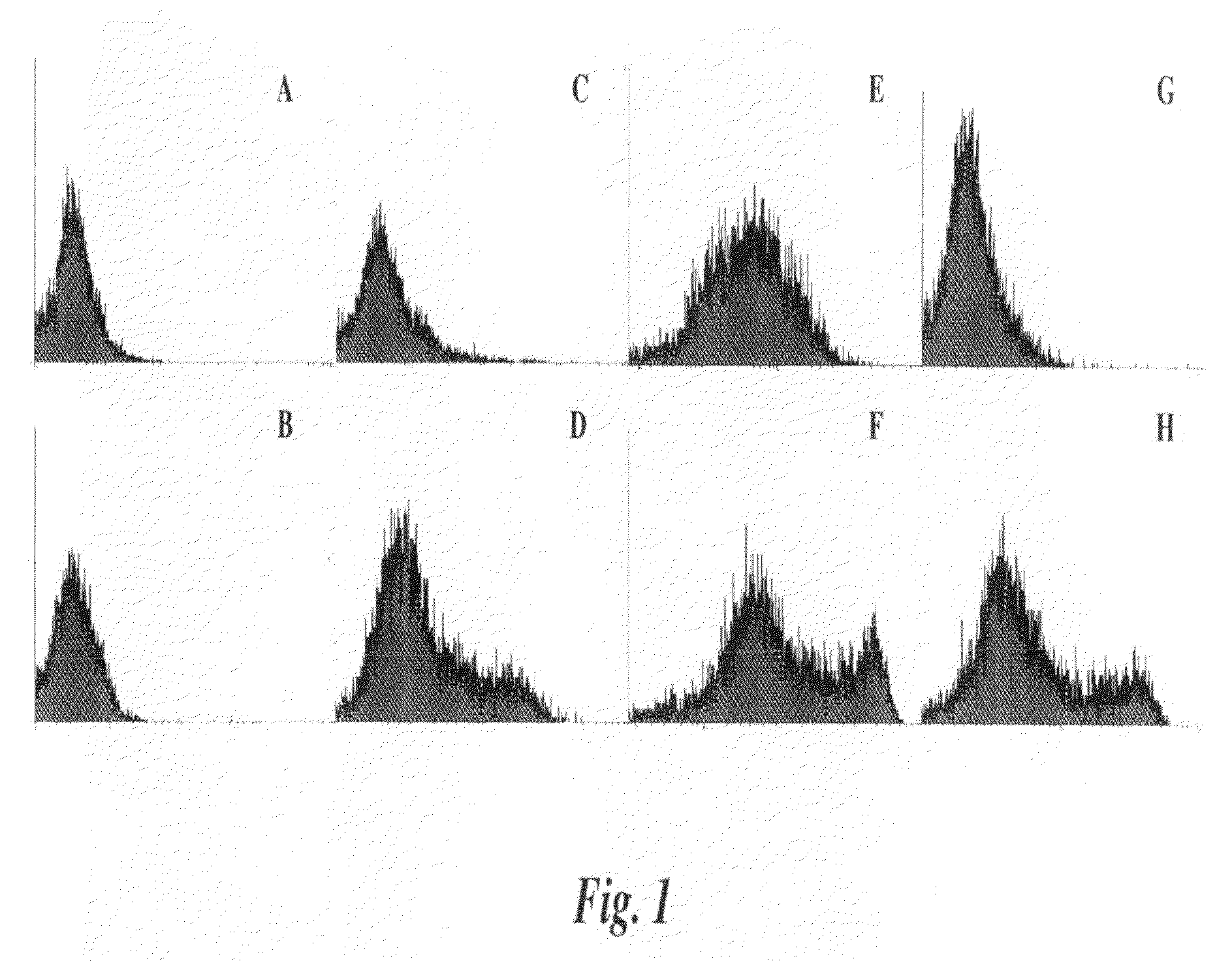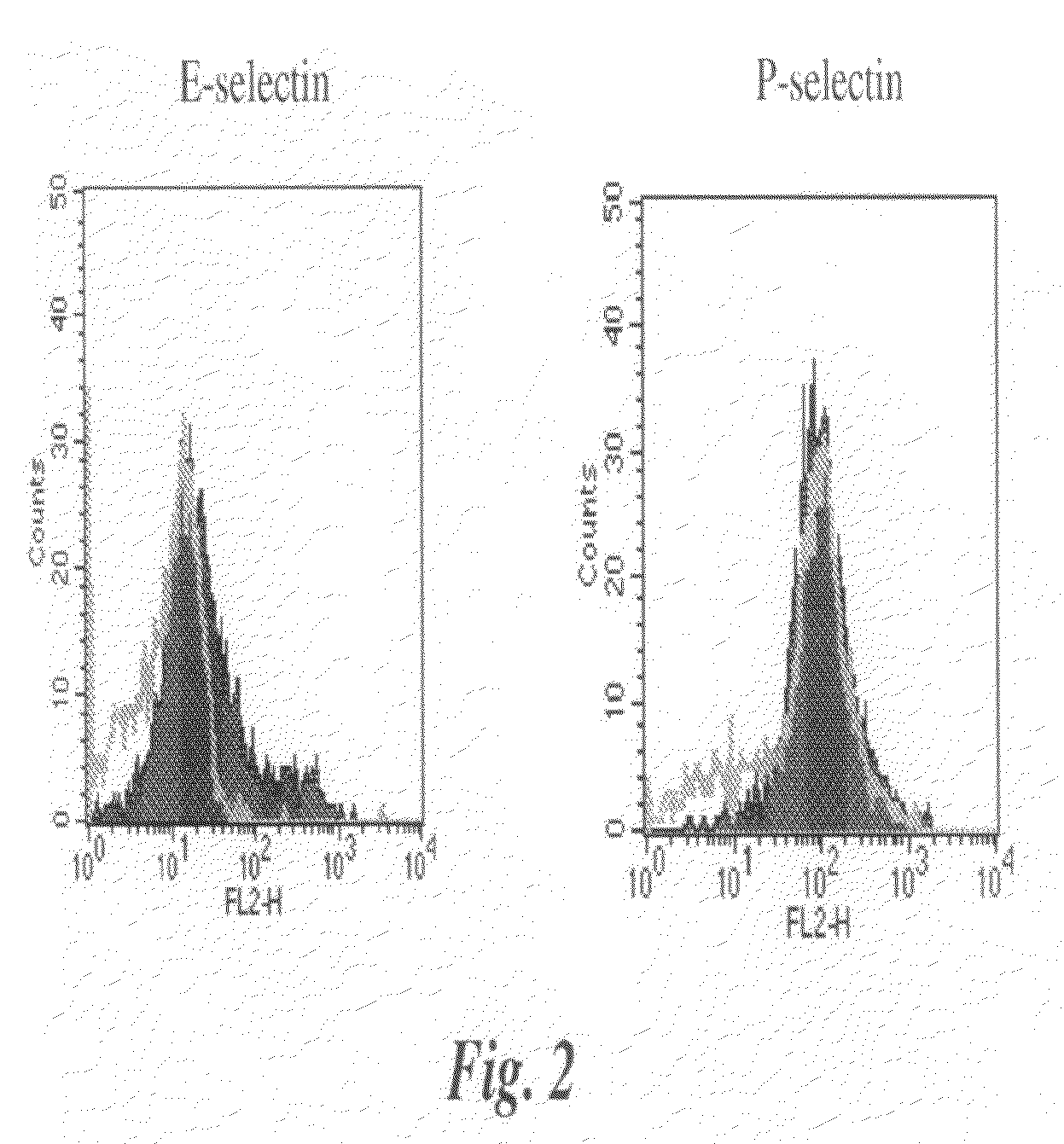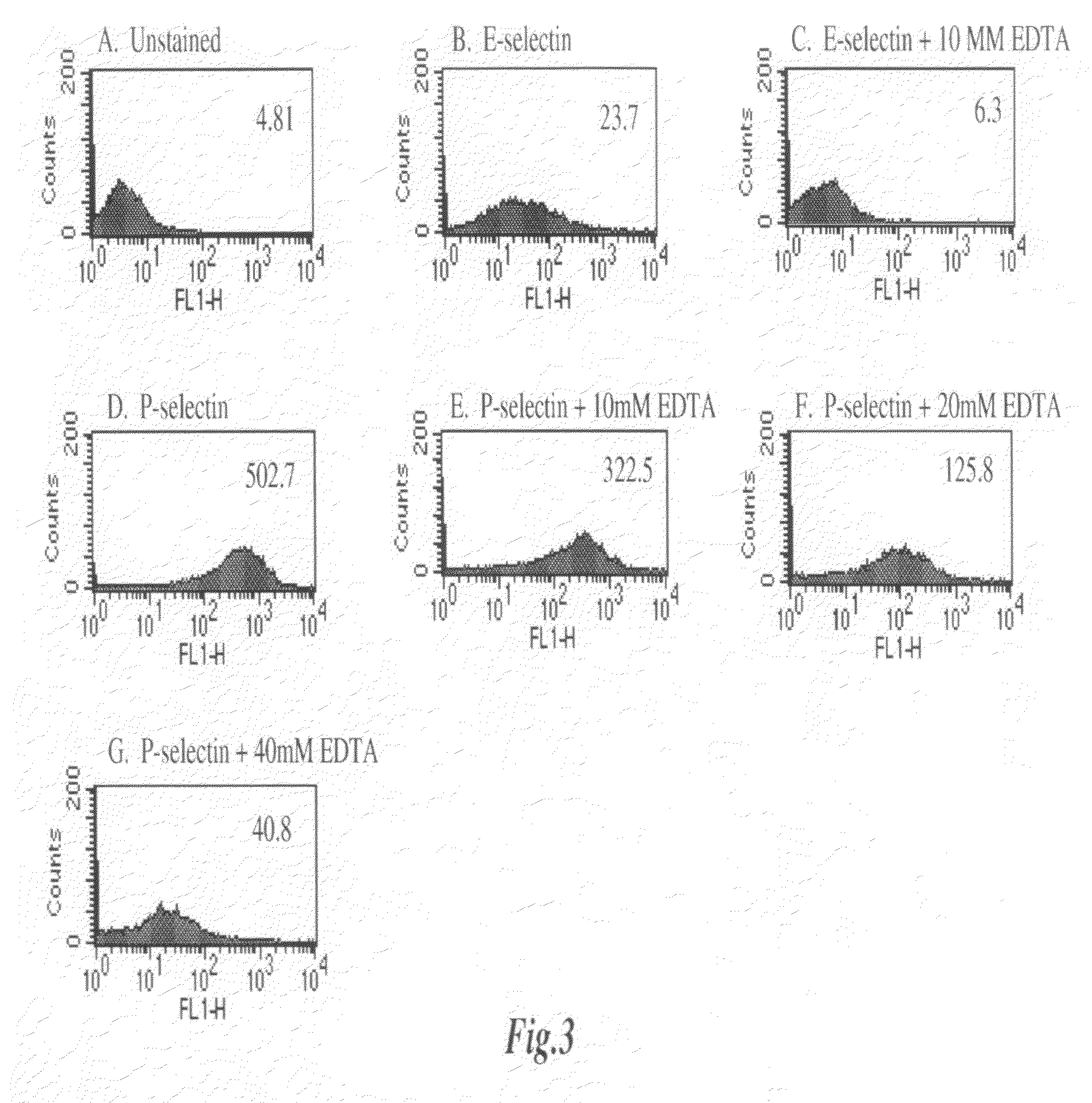Inhibition of cancer metastasis
a technology of metastasis and tumor cells, applied in the field of inhibition of cancer metastasis, can solve the problems of increased tumor cell motility, reduced homotypic adhesion, and poor prognosis of patients, and achieve the effect of preventing metastasis
- Summary
- Abstract
- Description
- Claims
- Application Information
AI Technical Summary
Benefits of technology
Problems solved by technology
Method used
Image
Examples
example 1
[0134]4T1 cells are deficient in sLea expression making the cell line a good candidate to study the involvement of sLex-mediated adhesion properties. There are several monoclonal antibodies (mAbs) defined as KM93, FH6 and CSLEX1 that recognize sLex. These mAbs recognize different forms of the sLex antigen (1-3). FH6 is specific for an extended form of sLex (4), while CSLEX1 and KM93 antibodies both recognize the sLex tetrasaccharide. However, the nature of the molecules carrying the carbohydrate determinant is known to affect the reactivity of CSLEX1 and KM93 (5). Among the above antibodies, only KM93 reacts with the 4T1 tumor cell surface. KM93, CSLEX-1 or FH6 reactive sLex epitopes may differentially react with P— and E-Selectin due to variations in lipid or peptide backbones.
[0135]The 4T1 cells were transfected with fucosyltransferase III (FTIII) to expand the expression of other sLex epitopes (4T1-FTIII). The 4T1 cells were also transfected with pIRES-EGFP vector alone as a cont...
example 2
[0136]is P-Selectin and E-Selectin reactivity with parental and transfected 4T1 cells were examined. Cells were incubated with recombinant mouse E-Selectin / Fc (human IgG) or P-Selectin / Fc (human IgG) chimeras and assayed for binding by flow cytometry. An increase for E-Selectin binding was observed after FT-III transfection (FIG. 2, first panel). This was expected given the increase in KM93, CSLEX-I and FH6 binding after transfection. P-Selectin, however, bound very well to the parental 4T1 cells and the binding did not increase for the transfected cells (FIG. 2, second panel). These data confirm that P-Selectin binding to 4T1 cells is not dependent on the expression sLex on the tumor cell surface.
example 3
[0137]The dependence of E-Selectin and P-Selectin binding to 4T1 cells on divalent cation concentration was examined. FIG. 3A illustrates unstained 4T1 cells. FIG. 3B illustrates 4T1 cells incubated with E-Selectin / Fc chimera followed by incubation with FITC-conjugated anti-human IgG. FIG. 3C is the same as FIG. 3B except the experiment was conducted in the presence of 10 mM EDTA. Both lectins bind the 4T1 cells, with P-Selectin showing very strong reactivity (FIG. 3D). Contrary to the E-Selectin reactivity (see FIGS. 3B and 3C), P-Selectin reactivity was not blocked by a low concentration of EDTA (see FIGS. 3D and 3E). EDTA inhibited P-Selectin reactivity only at high concentrations indicating the Ca++-independent nature of the reactivity (see FIGS. 3F and 3G).
PUM
| Property | Measurement | Unit |
|---|---|---|
| concentration | aaaaa | aaaaa |
| concentration | aaaaa | aaaaa |
| concentration | aaaaa | aaaaa |
Abstract
Description
Claims
Application Information
 Login to View More
Login to View More - R&D
- Intellectual Property
- Life Sciences
- Materials
- Tech Scout
- Unparalleled Data Quality
- Higher Quality Content
- 60% Fewer Hallucinations
Browse by: Latest US Patents, China's latest patents, Technical Efficacy Thesaurus, Application Domain, Technology Topic, Popular Technical Reports.
© 2025 PatSnap. All rights reserved.Legal|Privacy policy|Modern Slavery Act Transparency Statement|Sitemap|About US| Contact US: help@patsnap.com



